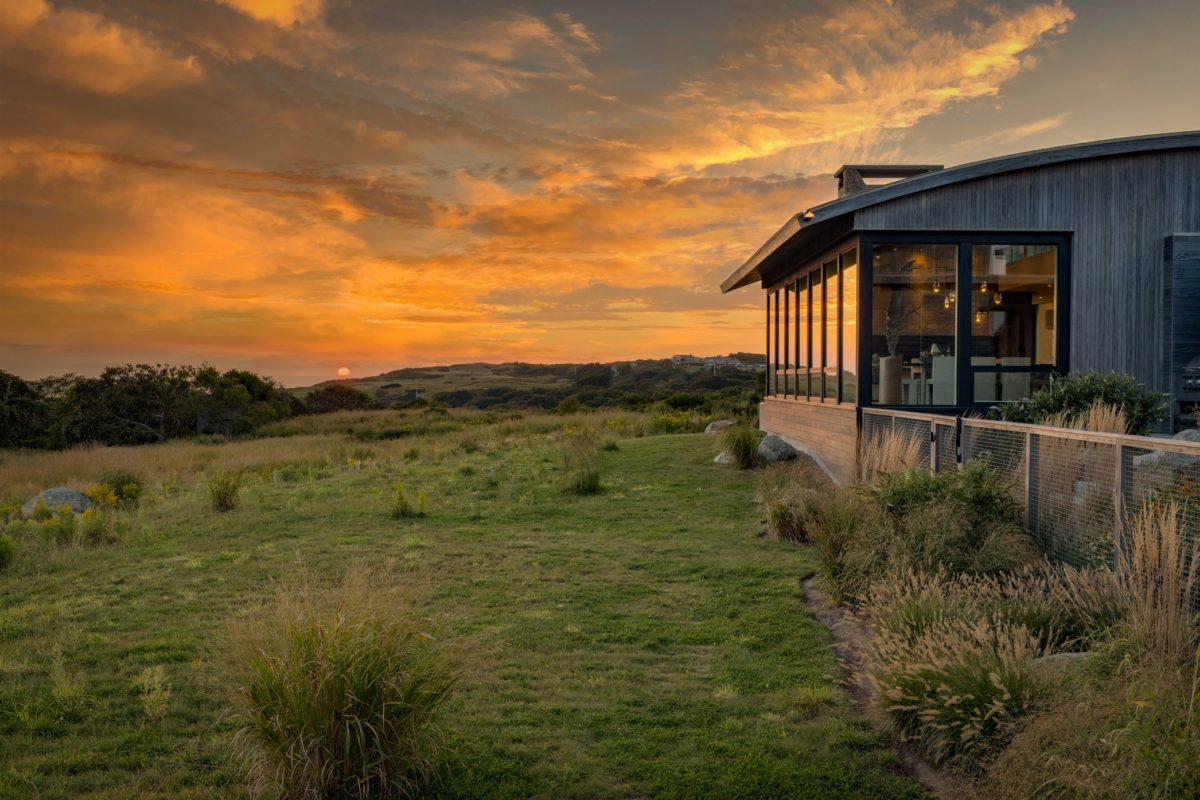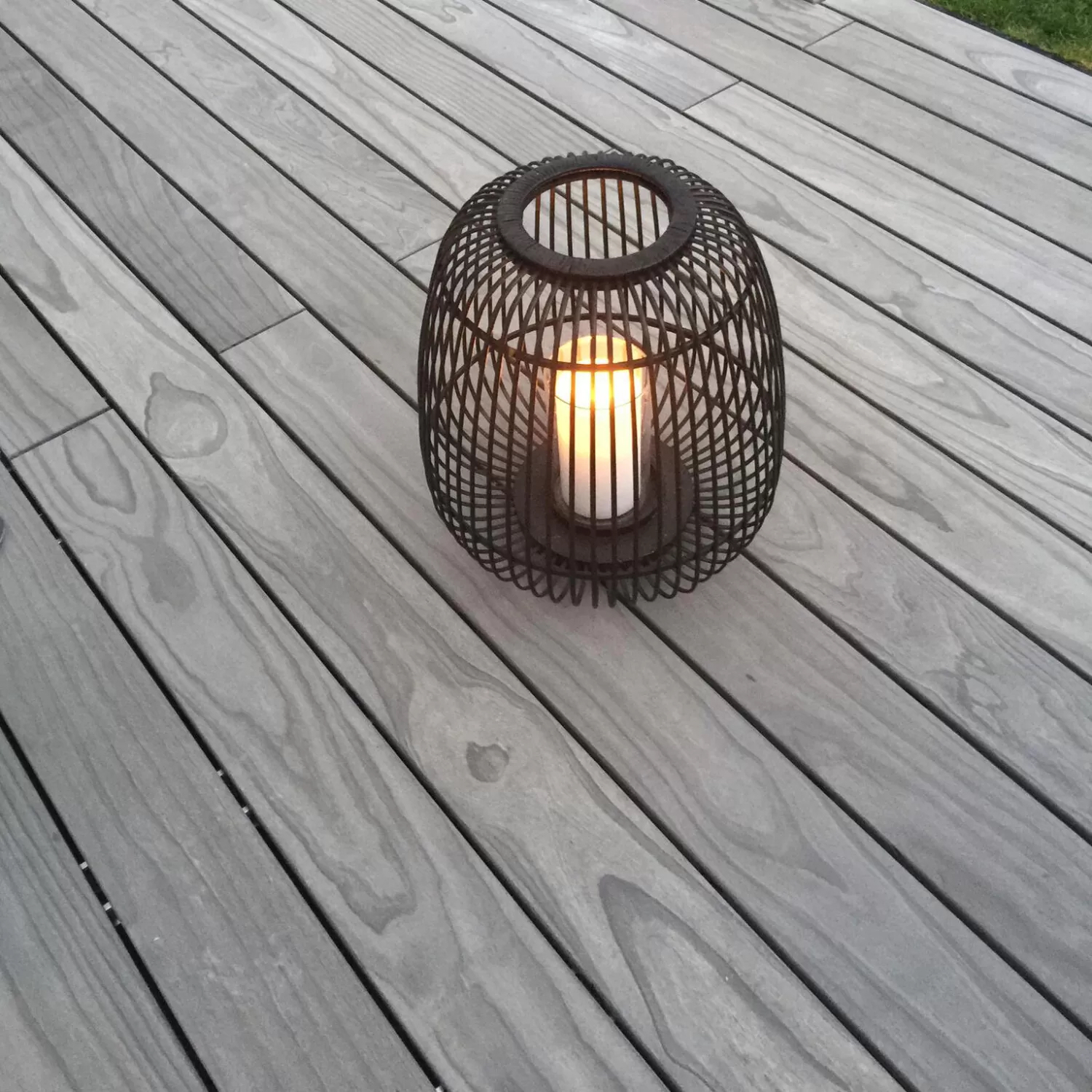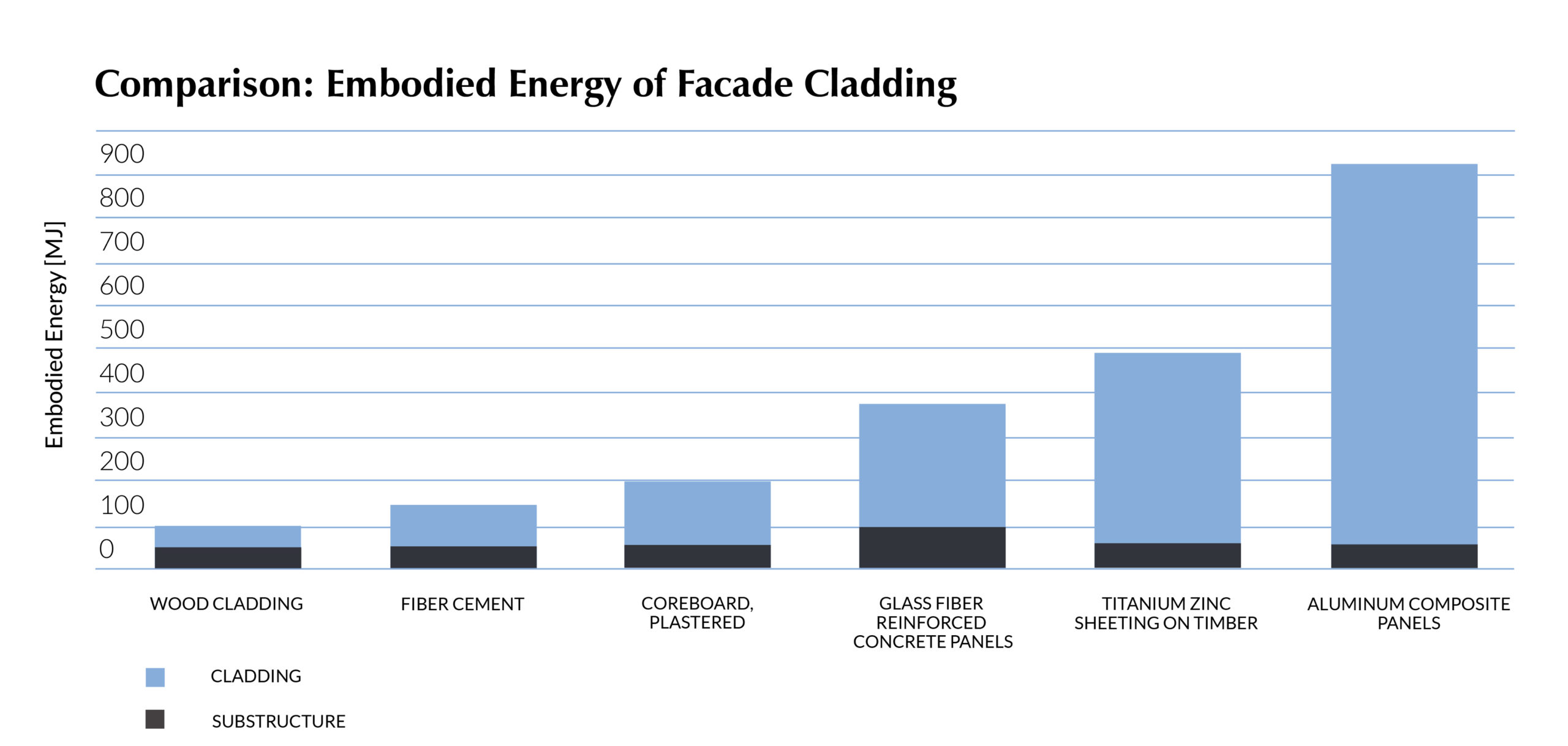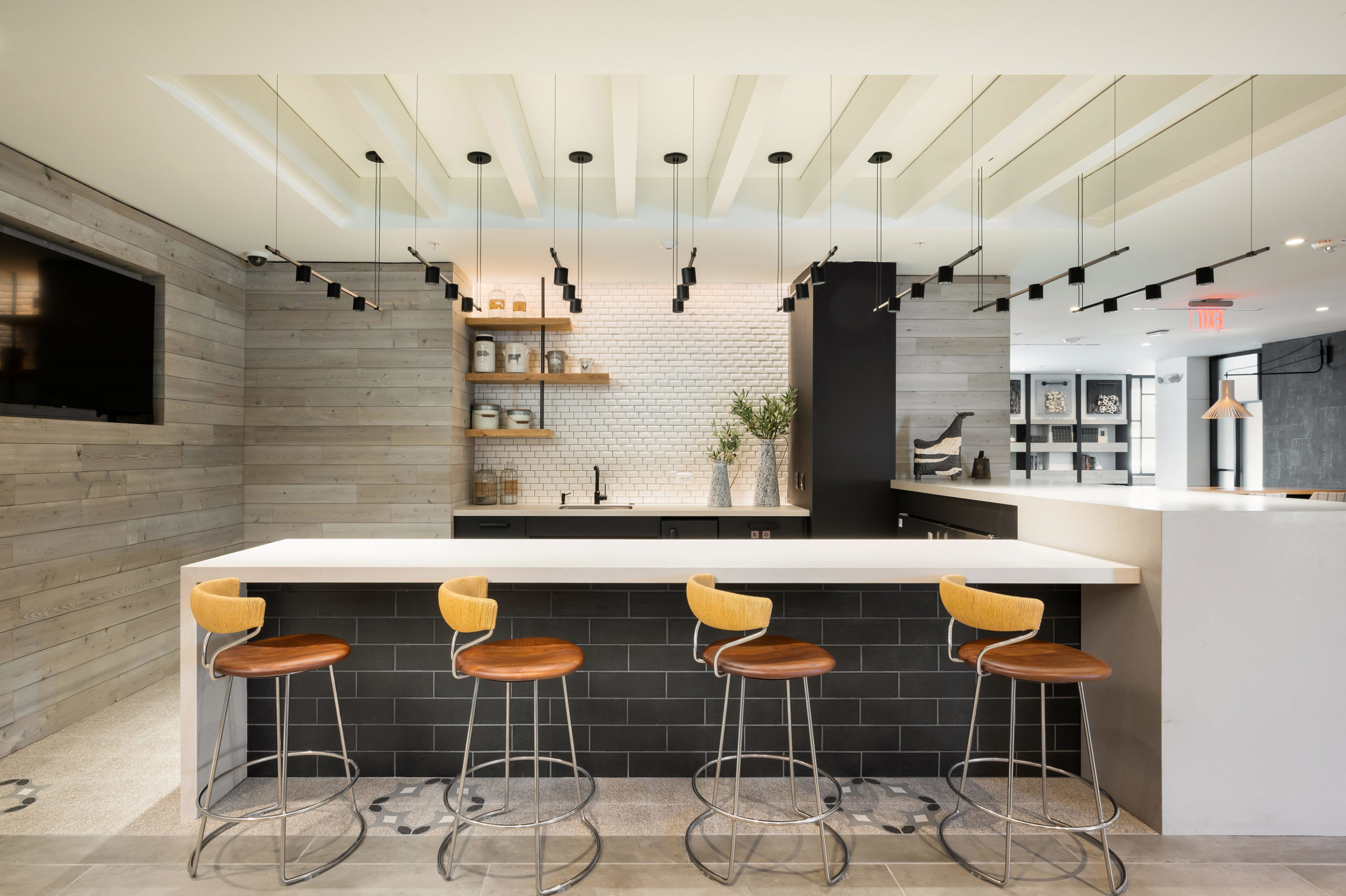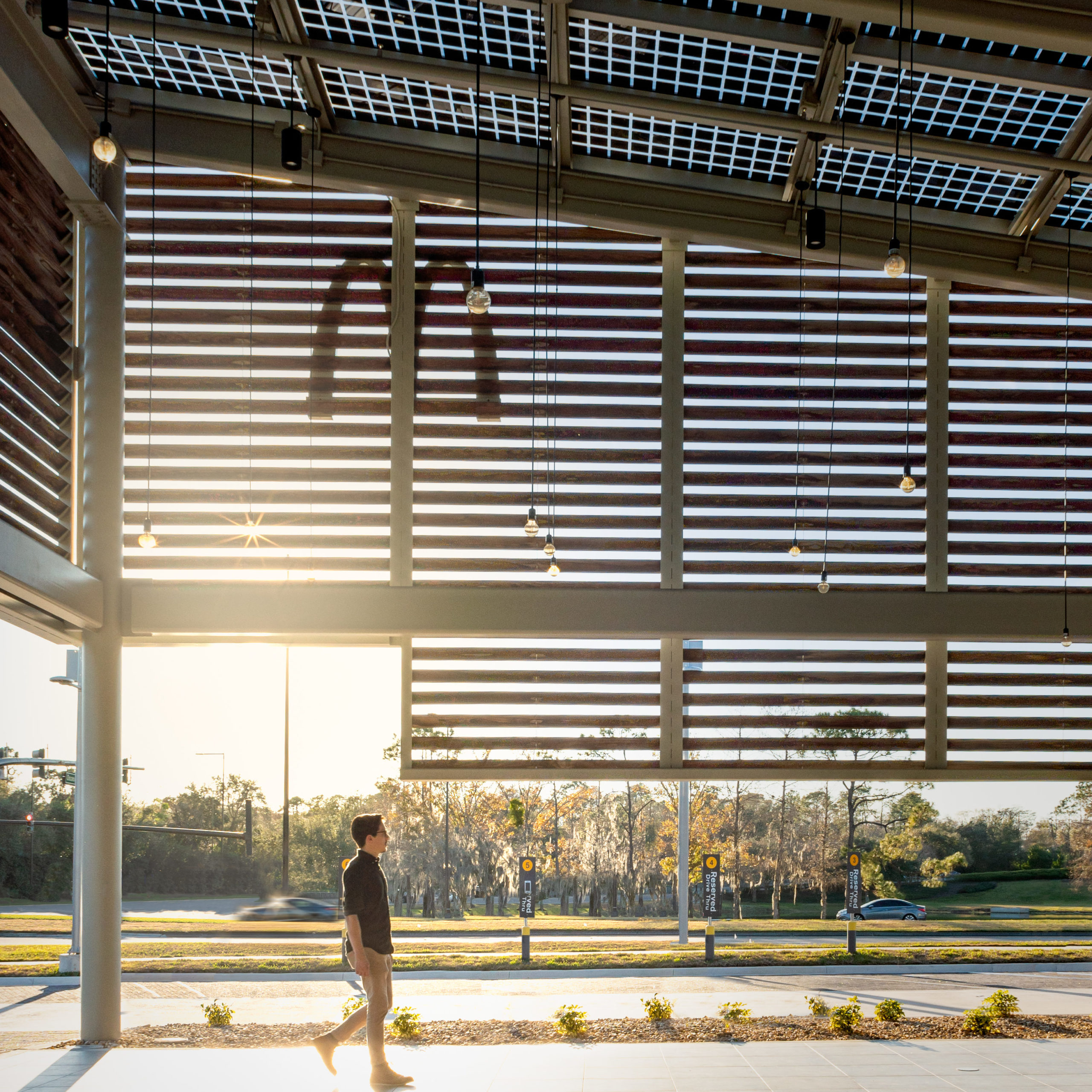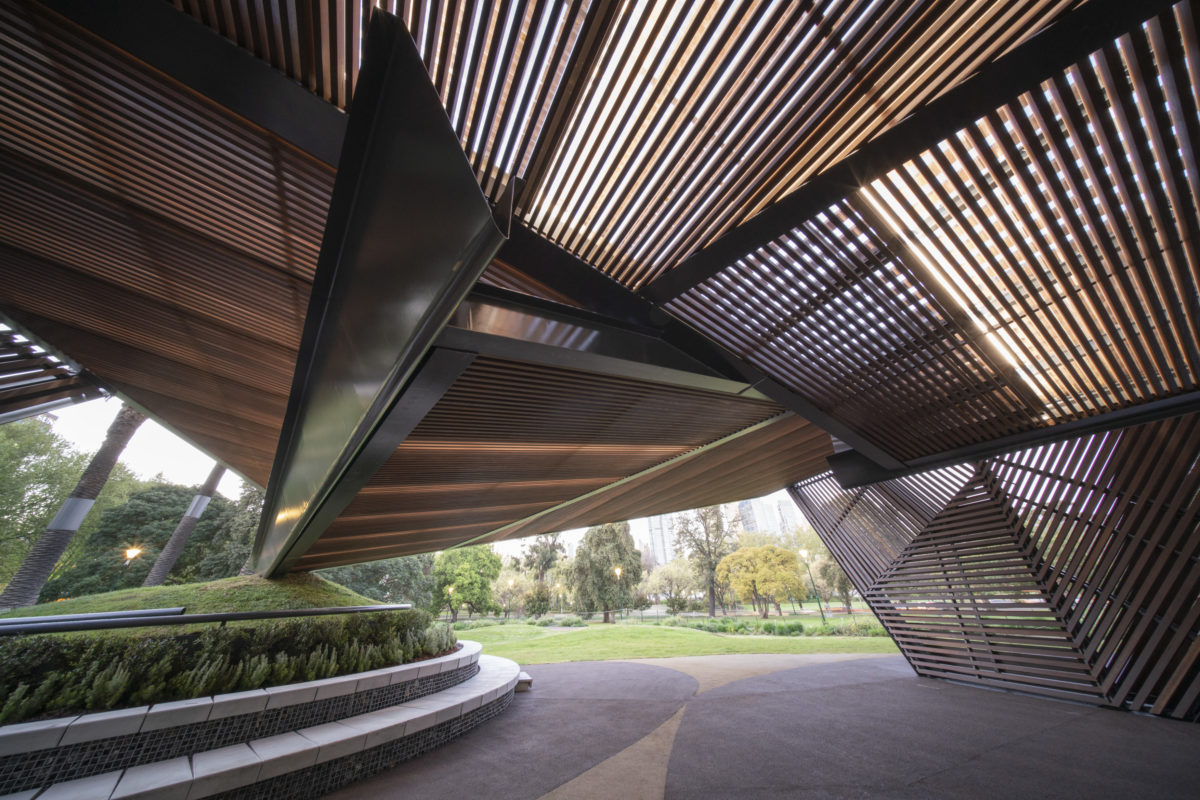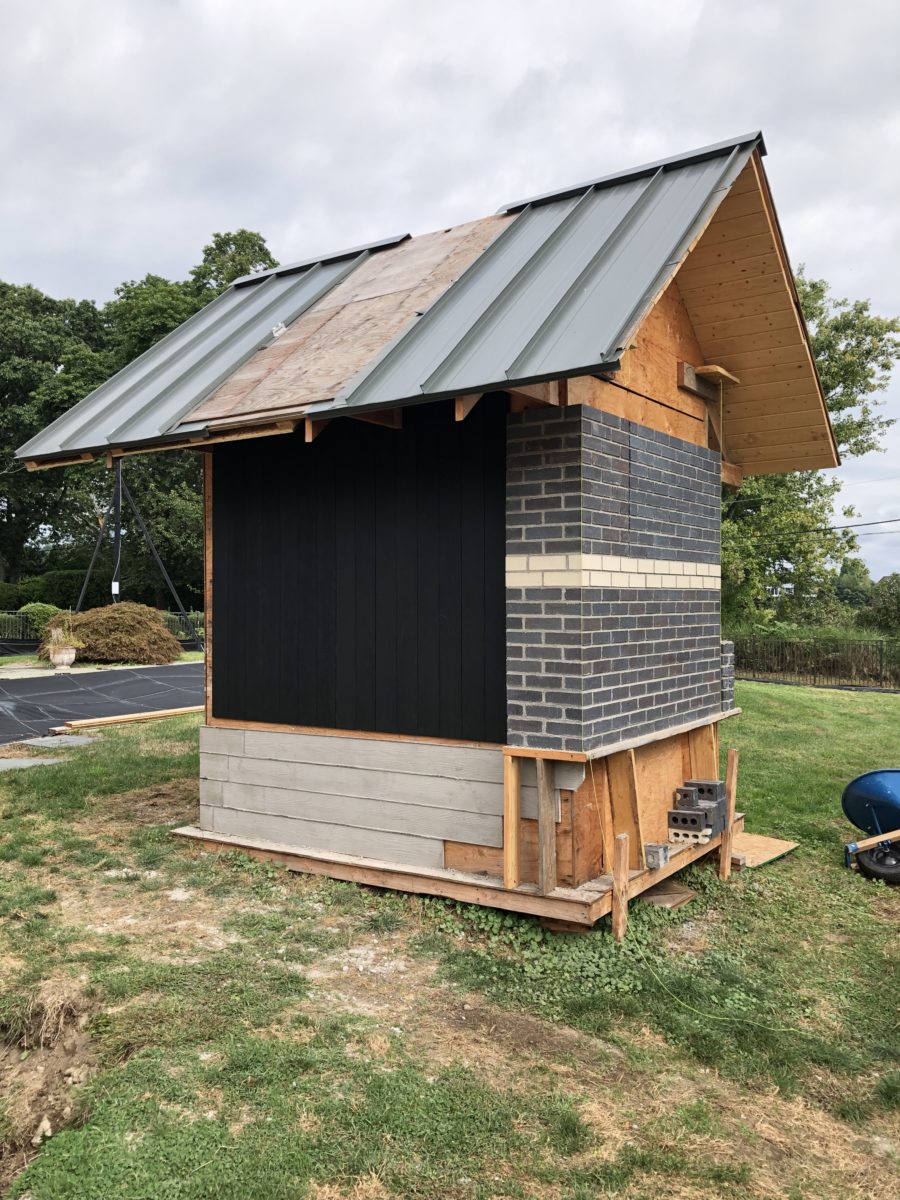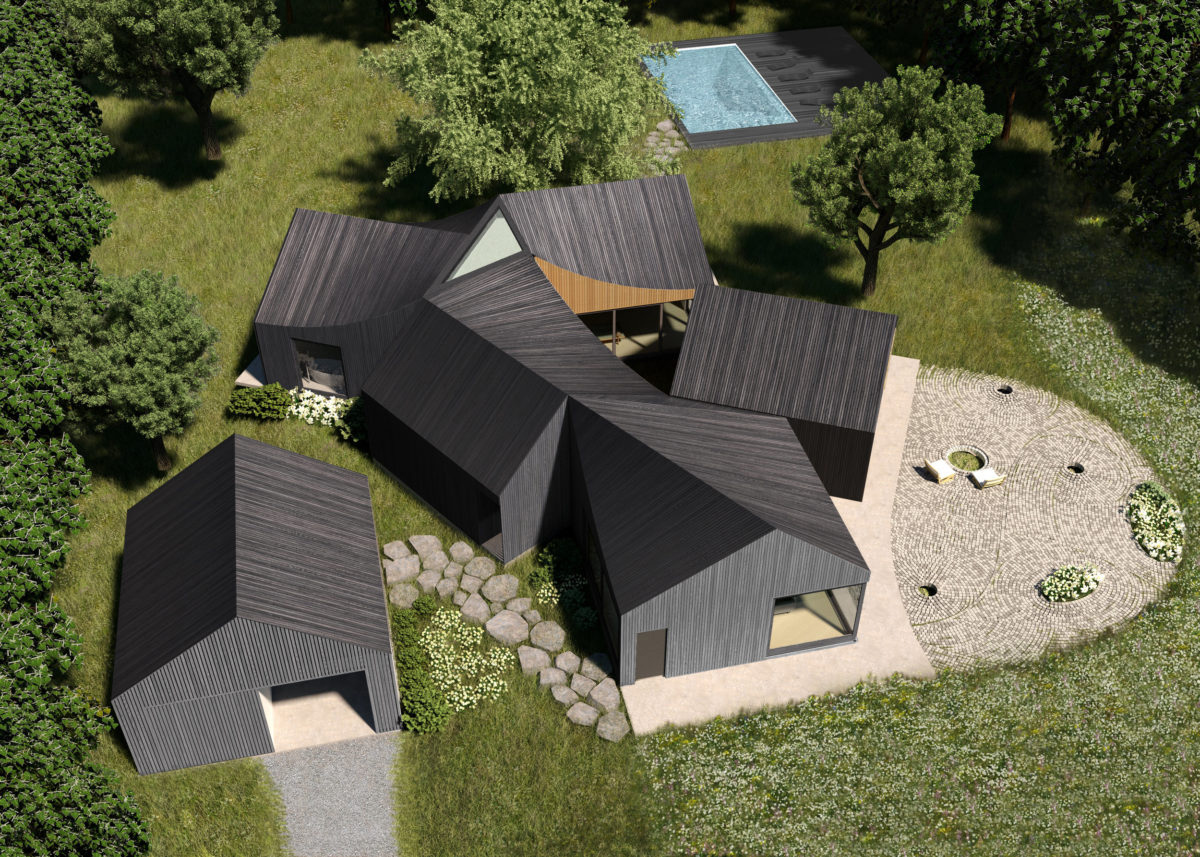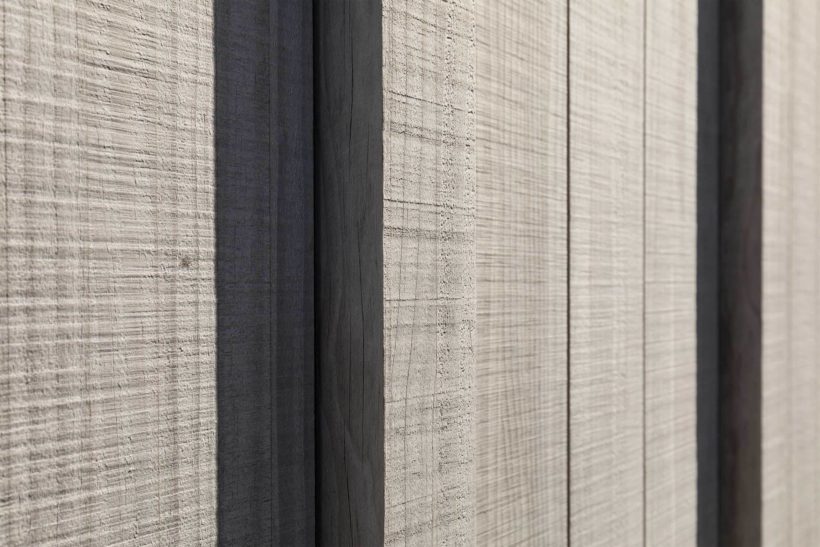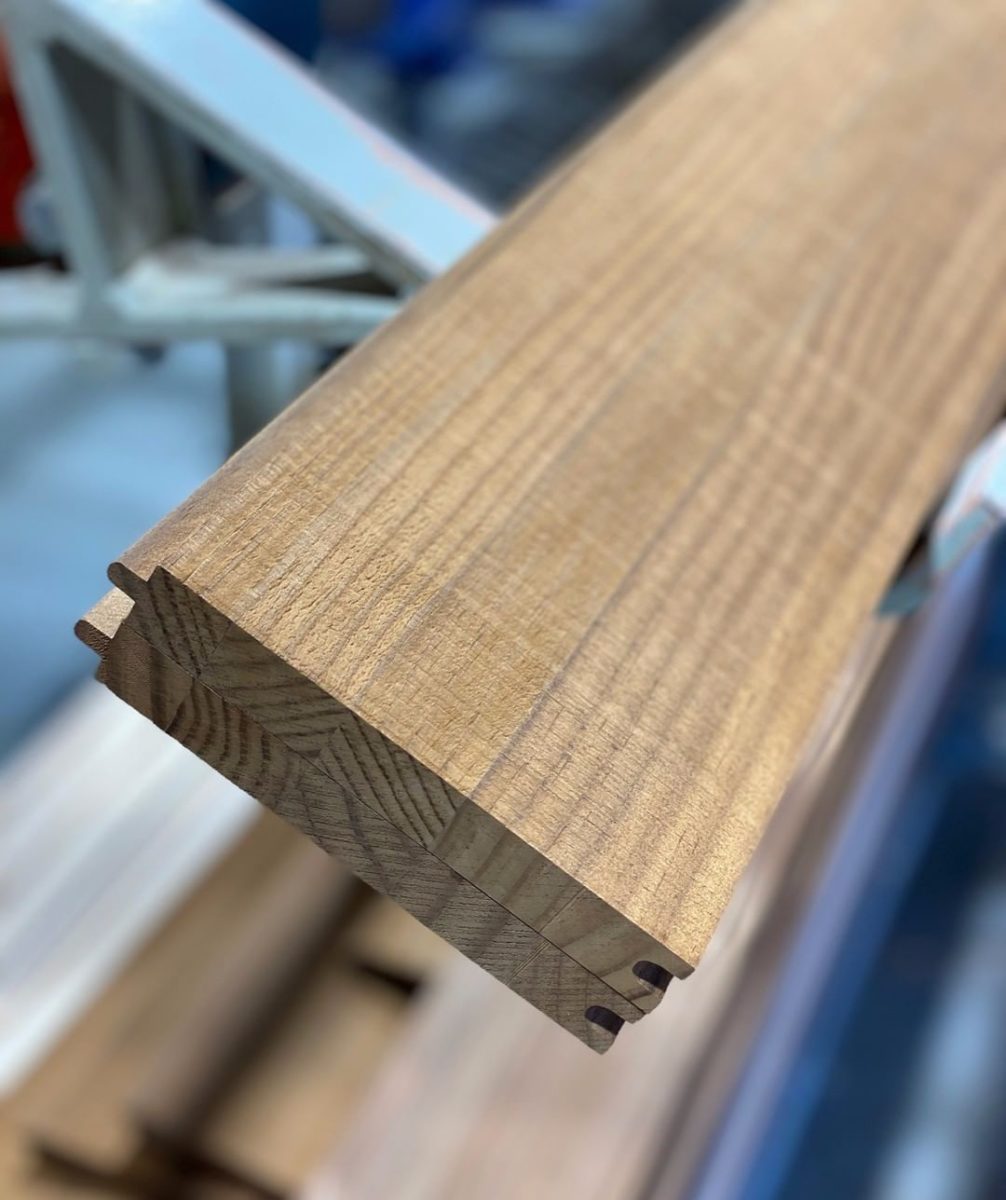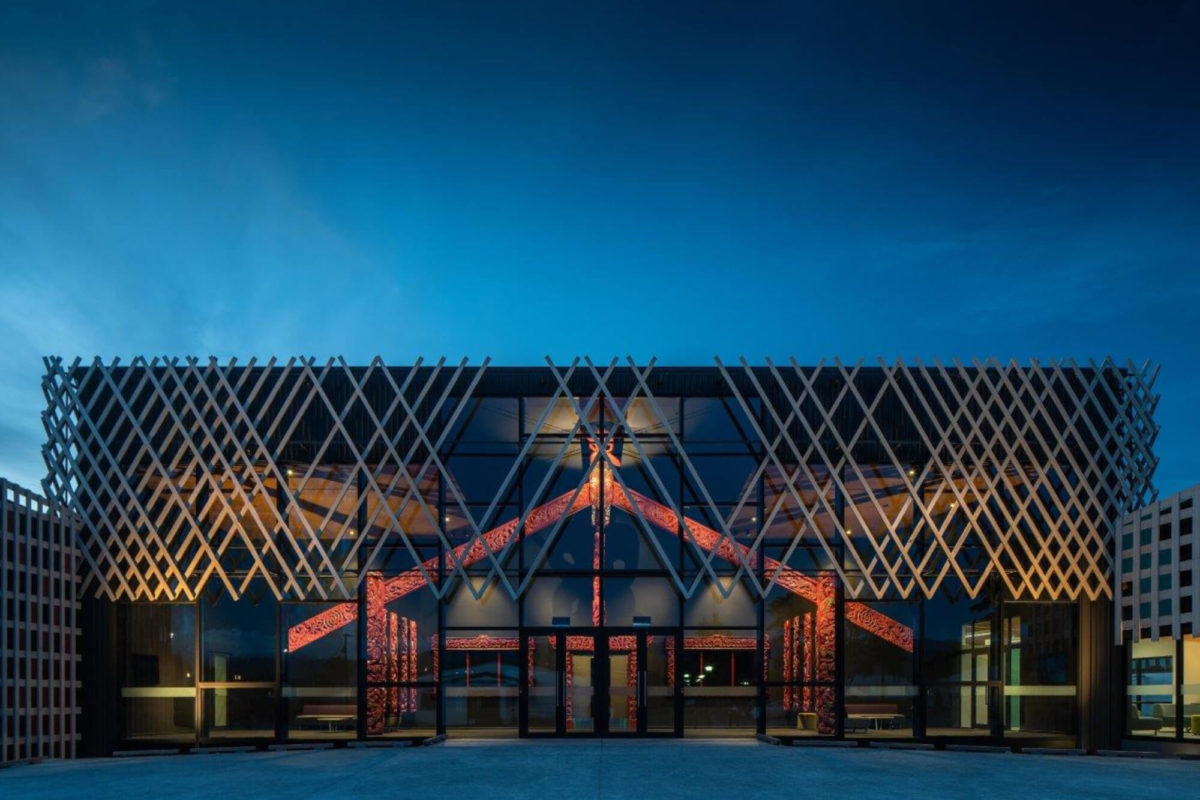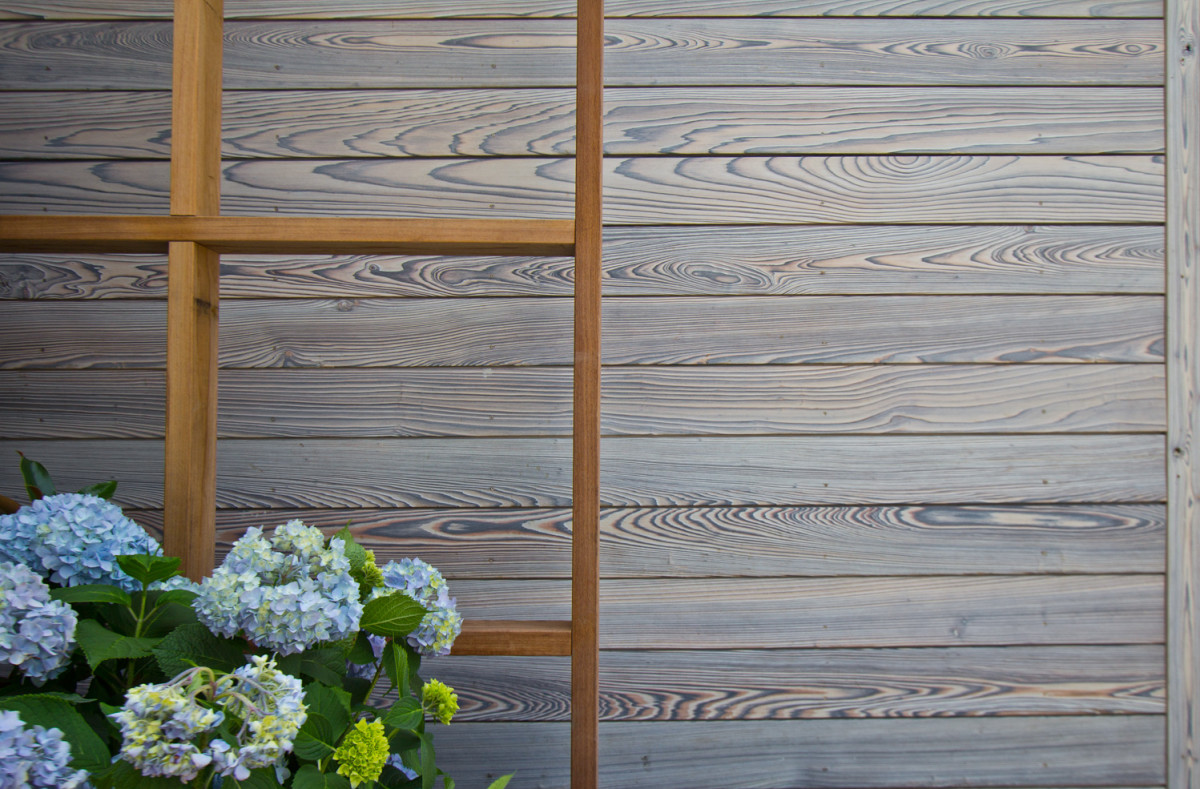The building enclosure (envelope, skin, facade, etc.) represents one of the greatest risk elements of construction. It is subjected to various weather conditions and must be constructed to endure long-term deterioration and weathering. There are numerous options for installing exterior cladding. In order to combat water penetration, air leakage, and increased energy consumption, hygroscopic materials such as wood are best suited for rainscreen applications.

Rain and snow, the two most common types of water that fall on an exterior wall, are either pushed downward by gravity or pushed sideways by the wind. A rainscreen deploys an outside surface – a rainscreen cladding layer – to break the power of sideways, wind-driven water movement, allowing any water that passes through the microscopic gaps in the surface to lose speed. The majority of water merely bounces off the surface or runs down the side of the building.


Moisture-Control Functions Within a Rainscreen:
Drainage: Lapped or interlocked exterior wood cladding resists most moisture from the elements, but it is not watertight. An air gap behind the cladding combined with a means of egress provides a path for moisture to escape the wall assembly. Open-joint rain screens that maintain physical openings between the boards also have a gap and a drainage path behind the boards. In a wood cladding installation, the drainage gap is created by installing furring strips or girts over the water-resistive barrier.
There are also drainage matrix products that are designed to create drainage stand-off within their own thickness, eliminating the need for furring strips. These are commonly known as building wraps that combine the functions of a drainage plane, water-resistive barrier, and an air barrier into one product. reSAWN conventionally views assemblies that employ a matrix as less desirable for overall drying when compared to fully gapped assemblies that include furring strips. Though, drainage matrix products can be better suited for retrofit projects where a true rainscreen application isn’t feasible.
Break: The presence of an air gap limits the wicking transfer of absorbed moisture from material to material into the wall assembly.

Vent: Adding a ventilation path at the top of a rainscreen allows the vented opening – with the drainage opening at the bottom of the wall assembly – to enable convection in the air gap behind the cladding. The airflow promotes additional drying within the assembly.
Successful rainscreen designs consist of numerous chosen components that allow for a range of options to fit any project’s needs. A thorough understanding of a project site’s climatic dynamics should inform rain screen design.
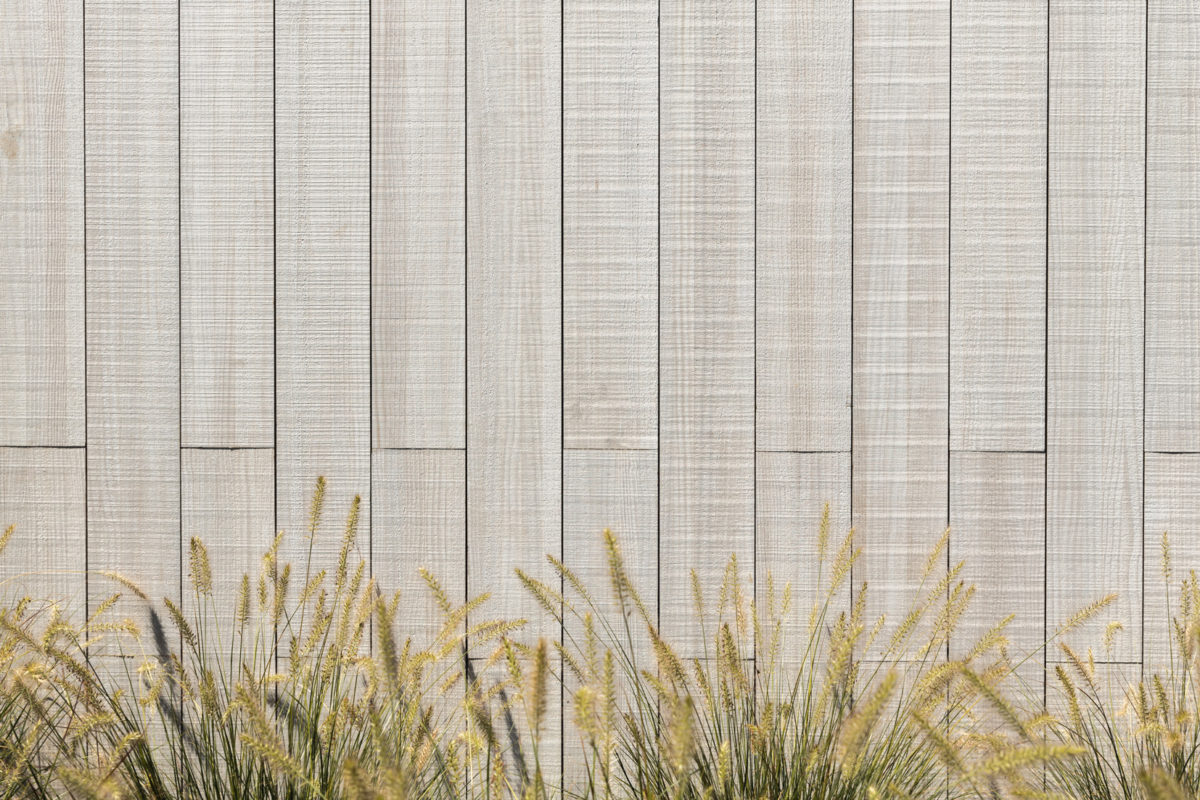
There are numerous high-quality components on the market that aid in the design of a successful rainscreen. Making high-quality detail choices throughout the design process and taking into account the whole wall assembly – from the exterior to the interior – can assist in the long-term utility and durability of a given rainscreen.
Membranes: Wall assemblies need to dry after wet weather conditions. Based on their design, wall assemblies dry inward, outward, or in both directions.
Water-resistive barriers block moisture and are often code-mandated in residential applications. In simplest form, these barriers are building wrap products attached to a building’s sheathing with mechanical fasteners or adhesives. In most cases, they are continuous or layered shingle-style across an entire facade.

Air barriers block air movement. Many building components in a wall assembly have air-blocking characteristics. To create fully effective air barriers, these materials should be combined with a system to ensure an envelope effect. Special attention must be given to openings such as windows and doors, transitions from wall to roof planes, and penetrations for mechanical and electrical intakes and outlets. An air barrier system is composed of a membrane supported by sheathing, seam tape, and specialized gaskets and seals at penetrations. Air can carry high amounts of moisture, so limiting the amount of air that can move through a wall assembly can help the likelihood of the enclosed portions of a wall staying dry.
Vapor barriers limit vapor diffusion. How much vapor movement a material experiences is known as its permeance value. Virtually all sheet, bat, or board building products have specific permeance determined by their composition and thickness. Vapor membrane products are specifically designed to limit vapor diffusion. Other products such as insulation have permeance as well. While their primary purpose is not vapor diffusion, as a component of the wall assembly, they have an impact. Efforts should be made to thoroughly research materials that make sense for the climate zone and project specifications. Negative impacts can occur within a wall assembly by the incorrect placement of a barrier with high vapor-blocking characteristics such as a polyethylene sheet. One of the greatest challenges occurs when a vapor barrier intended to keep a wall assembly from getting wet actually prohibits it from drying1.
The primary functions of water, air, and vapor barriers can be combined. While the needs of every application are project-specific, reSAWN sees repeat success in wood-clad rainscreen assemblies with the application of combined water and air barrier membranes that are also breathable, to allow any moisture present in the wall assembly to escape outwards.
Details:
A wall assembly’s success starts with attention to detail – including the project site conditions and material selection. The list below includes a limited sampling of some high-impact items.
- Material Movement: When specifying wood cladding, an understanding of wood and its movement is imperative. Intentional allowances for the expansion and contraction of all wood components should be considered. Adequate interlocking (i.e. tongue and groove)or lap conditions should be planned to inhibit separation between boards for material contraction. Depending on the cut of the wood cladding (specific to grain orientation), the primary axis of movement in relation to the board’s orientation as installed may vary.
- Material Stability and Sizing: The stability of wood, meaning how the wood maintains its original shape and dimension, is important within a rainscreen. Properties such as wood grade and wood modification can increase stability. Stability should play a central role in the cladding selection process, and this same process should be applied to the selection of the furring strips to which the cladding is fastened. The width and thickness of furring strips should allow for the intended depth of the drainage gap and also ensure a durable target for both the fasteners that tie the furring strips back into the wall’s structure as well as the fasteners that attach the wood cladding to the strips.
- Fastener Choice: A stainless steel wood-to-wood fastener is an important component of a wood-clad rainscreen assembly. A project site’s geography can influence the grade of steel fastener used, as some may be more appropriate in coastal or other specialized climates. Nails should be ring shank siding nails. Screws should be appropriately sized to limit the potential of breaking and splitting when driven into the cladding. Head shape, size, color/coating, and the appropriateness of piloting fastener holes as well as fastener length in light of the self-synching/sealing properties of the water-resistive and air barriers should all be considered.
- Penetrations: All penetrations through a rainscreen from windows to exhaust ducts should be thoroughly flashed and air sealed.
- Continuity of Detailing: Detailing at corners, facade transitions, trims, sills caps, and like conditions can be challenging. Taking into account allowance for expansion, rear drainage, mitigation of pest infiltration, or vented channels are all important details to keep in mind during all project stages.
- Durability During Construction: Components of a project will likely be exposed to the elements during the construction phase. Care should be taken to review how these components weather and react to UV exposure, as they will likely have exposure to the elements before the full assembly is complete. Many products sold specifically for applications in rainscreens are designed to be durable throughout the more rugged challenge of a project’s construction timeline.
- Adherence to Product Guidelines: All application-specific information provided by component manufacturers should be reviewed during the design, pre-construction, and construction phases of a project.

reSAWN’s specification reps can help building owners, architects, designers, builders, and all team members navigate rainscreen applications. Starting these conversations early in the design process allows reSAWN to suggest mock-up best practices and project-specific solutions. Our exterior installation guidelines were made with years of experience in a multitude of geographies, unique site locations, and countless specifications.

Contact us today to be connected with a local specification representative to discuss your project needs. We can advise on species and finish selection for your desired aesthetics, and product life cycle performance.
1 “Understanding Vapor Barriers”, April 2011, Lstiburek
Sources:
- Bailes, Allison: “Understanding Air Barriers, Vapor Barriers, and Drainage Planes”
- Bailes, Allison: “Vapor Retarder? Vapor Barrier? Perms? What the Heck?!”
- Dalgleish, Laverne: “Difference Between and Air Barrier, a Vapor Barrier and a Water Resistive Barrier”
- Fink, Justin: “Keep Siding Dry with a Vented Rain Screen”
– Holladay, Martin: “All About Rainscreens”
- Lstiburek, Joseph: “Built Wrong from the Start”
- Lstiburek, Joseph: “Moisture Control for New Residential Buildings”
- Lstiburek, Joseph: “Understanding Vapor Barriers”
– RAiNA Rainscreen Performance Committee: “RAiNA Technical Bulletin: Defining Rainscreen Wall Performance”
– Rickets, Lorne and Marcus Dell: “Understanding Vapor Diffusion and Condensation – The Basics”
- Straube, John: “Moisture and Materials”
- Straube, John and Jonathan Smegal: “Modeled and Measured Drainage, Storage and Drying Behind Cladding Systems”
- Wolfgang, Brian: “Rainscreen Gaps in Exterior Walls”




